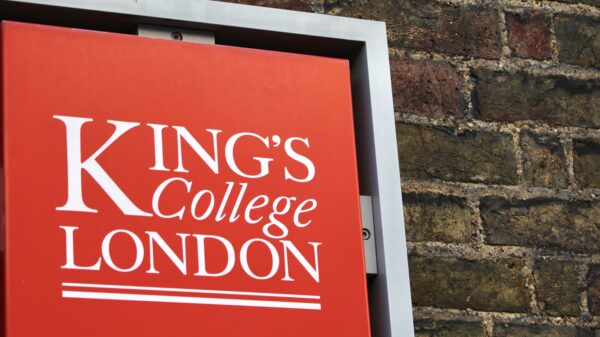Staff Writer Anoushka Sinha tells the story of the Advent calendar around the world – from fasting to eating chocolates.
The yearly debate of when it is socially acceptable to begin playing Mariah Carey and wearing candy-cane jumpers always seems to end on 1 December.
Nobody can argue that the Christmas lights on the Highstreet and the baubles on the tree have earned their place by this point in the year. The Christmas Markets are in full sway and there does not seem to be a single shop or restaurant empty in Covent Garden.
And of course, the advent calendars are back. But where do these calendars come from?
The word ‘advent’ is derived from the Latin ‘adventus’, meaning ‘arrival’; this marks the second coming of Christ. In a tradition dating back to the Middle Ages, a countdown to the birth of Christ started four Sundays before Christmas.
This countdown could include a box depicting the Nativity scene to be carried door-to-door for good luck – a practice which can still be seen in the Christmas Crib set up in places like Trafalgar Square.
A seemingly more prominent tradition however was a 40-day Nativity Fast; this can still be seen in Orthodox Churches today. The fast begins four Sundays before Christmas and ends twelve days after with the January Feast of Epiphany, marking the arrival of the three wise men in Bethlehem. If you have not guessed it yet, this is the inspiration for the famous “Twelve Days of Christmas” song.
Over time, some decided that rather than change the start day of the fast every year, the Advent period should begin on 1 December instead. Nonetheless, for Orthodox Churches following the Julian Calendar, the dates of the Nativity Fast are 28 November to 6 January.
The practice of fasting for Christmas seems counterintuitive and sombre in comparison to the more commercial traditions of the 21st century – a far cry from eating a chocolate a day waiting for Santa and his sleigh. From a broader perspective, however, fasting is a common theme in many major religions; followers of Islam may fast for Ramadan (in the lead-up to Eid) and Hindus may do the same for festivals like Navratri (in the lead-up to Diwali). So, it makes complete sense that Christianity also participates in this practice of spiritual cleansing and self-discipline.
So how – and when – did the tradition of fasting evolve into the advent calendars we see today?
The origin of the modern advent calendar is somewhat disputed. It is believed by many that in 1851 a Protestant bookshop owner in Austria created the first wooden, handmade advent calendar, featuring a devotional image for each day leading up to Christmas.
A somewhat less vague account of the origin of the advent calendar tells of a German printer Gerhard Lang who sold calendars in the 1920s which included twenty-five boxes, each containing a Biblical picture or verse. The story goes that, as a child, his mother would stick 24 sweets on cardboard so he could eat one sweet every day while waiting for Christmas. The idea stuck with Lang, and he began selling his own calendars in 1908.
It seems feasible that both stories were true – perhaps the Protestant bookshop owner made a calendar which carried on through the years until Lang made and officially sold his own.
Before this advent calendar, German Protestants in the early 19th century would mark the days of December in various ways. Some would light 24 candles while others would hang up 24 Biblical images. If these were not available, people would simply draw a line on the wall with chalk each day.
This German-Austrian tradition of counting down the days to Christmas, like many other traditions, was brought to Britain in the 19th century. When Prince Albert of Germany married Queen Victoria in 1840, he brought with him the Christmas tree, the Christmas turkey (although most commoners at the time could only afford a goose), and the annual Christmas countdown.
Queen Victoria was quite the trendsetter in her day – it was her white wedding dress which inspires the brides of today – so, when she carried on her late husband’s German Christmas traditions, they quickly caught on with the public.
Lang’s calendars gained popularity in the 1920s but, with the rations of WW2, the calendars became increasingly rare.
In the 1950s however, they re-emerged – this time containing small gifts and chocolates in lieu of the devotional images and phrases from earlier in the century.
By 1972, Cadbury began commercially producing chocolate advent calendars and the rest was history.
Members of the Orthodox Church will still observe the Nativity Fast today and, in Western Churches (Lutheran Churches in particular), an Advent Wreath with five candles is used to mark the four Sundays before Christmas along with Christmas Day.
Across the world, different ways are used to countdown to Christmas; Scandinavians may use 24 candles while people in China have paper lanterns and pagodas. In Mexico, the journey of Mary and Joseph is marked from 16 to 24 December, as each evening a child leads a processional from door to door dressed as an angel.
In Britain, the chocolate advent calendar is the most prominent. Still, there are many who, due to preference or dietary restrictions, may opt for a calendar filled with jewellery or even socks!












